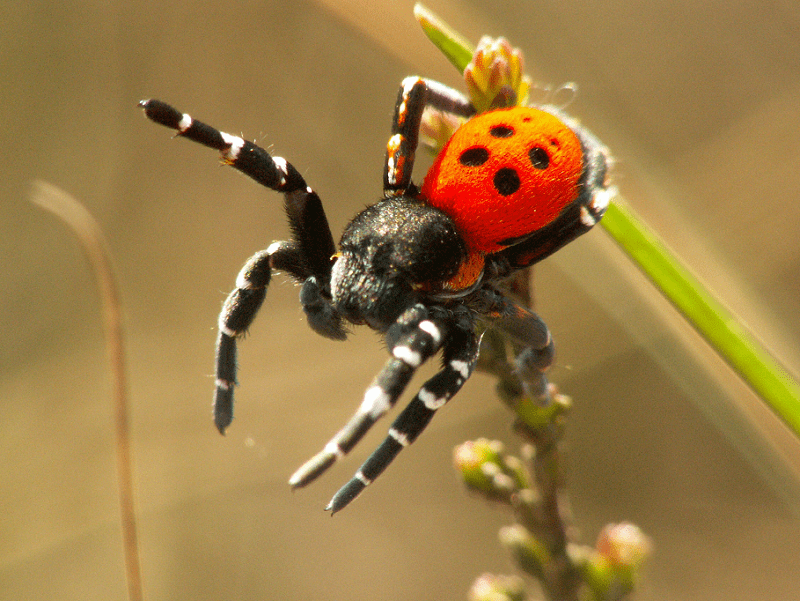Ladybird Spider Facts
- Firstly, the amazing Ladybird Spider remains a small but sincerely fascinating variety of arachnid. Also, like others in its genus, the species derives its common name from the coloring of the male.
- Most noteworthy remains the fact that most scientists thought the fascinating species to be extinct for nearly 70 years, in England. However, researchers rediscovered a few individuals there in 1980.
- But, it is currently (and sadly) only known to exist in widely scattered small concentrations throughout its endemic range. As a result, it has been protected by the Wildlife and Countryside Act since 1981.
- Finally, efforts to repopulate the species have successfully managed to increase its numbers somewhat.
Related Articles
Ladybird Spider Physical Description
Perhaps most notably, the Ladybird Spider displays sexual dimorphism in two separate ways. To begin with, the males attain a typical size of 0.35 in (9 mm). The females usually reach a far larger size, growing to as much as 0.63 in (16 mm) in size.
The females become less colorful, though, being almost universally a jet black in color. Yet the males (while smaller) develop far brighter coloring. They present a bright orange on their backs, with two large black spots displayed.
Further, the females almost always die shortly after reproducing, and in a quite grisly fashion. That holds true because the numerous tiny hatchlings proceed to feed on the body of the mother.
- Kingdom: Animalia
- Phylum: Arthropoda
- Class: Arachnida
- Order: Araneae
- Family: Eresidae
- Genus: Eresus
- Species: E. sandaliatus
Ladybird Spider Distribution, Habitat, and Ecology
First of all, the remarkable Ladybird Spider continues to be endemic to a restricted range across Europe. This range extends from England and southern Norway, all the way to northern Italy.
But, within that area, these spiders typically prefer a highly specialized habitat. It also seems to favor inhabiting areas of lowland heath. Most relevantly, within that habitat type, it favors south-facing slopes, with well-drained soil almost exclusively.
Consequently, it constructs its nests there, which consists of vertical burrows lined with silk, with a crown of spider silk. These it uses to catch the wide variety of insects they prey upon.
Species Sharing Its Range
Check out our other articles on 7 Amazing Australian Species, Indian Bullfrog, Eye of the Sahara, Iberian Lynx, Amethyst Deceiver, Green Anaconda, Weedy Seadragon, European Hornet

